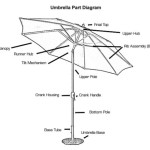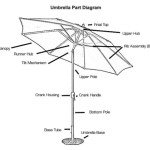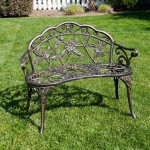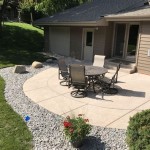The Enduring Appeal of Beautiful Patio Stones
Patio stones, also known as pavers, represent a significant element in landscape design, providing both aesthetic appeal and functional value to outdoor living spaces. The selection of appropriate patio stones involves a careful consideration of several factors, including material durability, color and texture, installation techniques, and overall integration with the surrounding environment. This article explores the various aspects of patio stones, highlighting their benefits and providing insights into their selection and maintenance.
The versatility of patio stones lies in their ability to transform a simple backyard into an inviting and usable extension of the home. They define outdoor spaces, create pathways, and contribute to the overall ambiance. Whether the goal is to create a rustic, natural aesthetic or a sleek, modern design, the right patio stones can achieve the desired effect. Beyond aesthetics, patio stones offer practical advantages, such as enhanced drainage, ease of maintenance, and increased property value.
Material Diversity in Patio Stone Selection
The market offers a diverse range of materials for patio stones, each with its unique characteristics and suitability for different applications. Concrete pavers are a popular choice due to their affordability, durability, and wide variety of colors and shapes. Concrete pavers can be manufactured to mimic the appearance of natural stone, offering a cost-effective alternative without compromising on aesthetics.
Natural stone, such as flagstone, slate, and travertine, provides a timeless and elegant look. These materials offer natural variations in color and texture, creating a unique and aesthetically pleasing surface. However, natural stone is generally more expensive than concrete pavers and may require more specialized installation techniques.
Brick pavers offer a classic and charming aesthetic, often used in traditional landscape designs. Brick is durable and can withstand harsh weather conditions, making it a suitable option for outdoor applications. However, brick can be more porous than other materials, requiring sealing to prevent staining and damage from moisture.
Porcelain pavers are gaining popularity due to their durability, resistance to staining, and wide range of design options. Porcelain is non-porous, making it ideal for areas prone to spills or moisture. It also offers a sleek and modern aesthetic, suitable for contemporary landscape designs.
Each material has its own set of advantages and disadvantages. The selection process should involve a careful assessment of the desired aesthetic, budget constraints, and the specific requirements of the outdoor space.
Aesthetic Considerations: Color, Texture, and Pattern
The aesthetic appeal of a patio is heavily influenced by the color, texture, and pattern of the patio stones. Color plays a critical role in setting the mood and complementing the surrounding landscape. Earth tones, such as browns and grays, create a natural and rustic feel, while lighter colors can brighten up a space and create a more modern aesthetic.
Texture adds depth and visual interest to a patio. Smooth pavers create a sleek and contemporary look, while textured pavers offer a more rustic and natural feel. The texture also affects the slip resistance of the patio surface, which is an important consideration for safety, particularly in areas prone to moisture.
The pattern in which the patio stones are laid can significantly impact the overall aesthetic. Common patterns include running bond, herringbone, basketweave, and circular patterns. The choice of pattern should complement the style of the home and the surrounding landscape. Intricate patterns can add visual interest and create a focal point, while simpler patterns offer a more understated and elegant look.
Consideration should be given to the scale of the patio when selecting the size and shape of the pavers. Larger pavers can make a small patio appear larger, while smaller pavers can add detail and visual interest to a larger space. The shape of the pavers can also influence the overall aesthetic, with rectangular pavers creating a more structured and formal look, and irregular shapes offering a more natural and rustic feel.
Ultimately, the aesthetic choices should reflect personal preferences and complement the overall design of the outdoor space. It is beneficial to view samples of different patio stones and patterns in person to make an informed decision.
Installation and Maintenance Best Practices
Proper installation is crucial for the longevity and performance of patio stones. A well-constructed base is essential to prevent settling and shifting over time. The base typically consists of a compacted layer of gravel, followed by a layer of sand. The depth of the base depends on the type of soil and the expected load on the patio surface.
Before laying the patio stones, it is important to ensure that the base is level and properly compacted. A plate compactor is often used to achieve the desired compaction. Once the base is prepared, the patio stones can be laid according to the chosen pattern. A rubber mallet is used to tap the stones into place and ensure that they are level with each other.
After the patio stones are laid, polymeric sand is swept into the joints between the stones. Polymeric sand hardens when wet, creating a stable and weed-resistant joint. It is important to follow the manufacturer's instructions when applying polymeric sand to ensure proper curing and performance.
Regular maintenance is essential to keep patio stones looking their best. This includes sweeping the patio regularly to remove debris and prevent staining. Pressure washing can be used to remove dirt and grime, but caution should be exercised to avoid damaging the stones or joints.
Sealing patio stones can protect them from staining and weathering. Sealers are available in various types, including penetrating sealers and film-forming sealers. Penetrating sealers soak into the pores of the stone, providing protection without altering its appearance. Film-forming sealers create a protective layer on the surface of the stone, enhancing its color and shine.
Addressing issues like weeds and efflorescence is essential for maintaining the beauty of the patio. Weeds can be removed manually or with herbicides. Efflorescence, a white powdery deposit, can be removed with a specialized cleaner. Regular inspection and prompt attention to these issues can help prolong the life of the patio and maintain its aesthetic appeal.
Winter maintenance, especially in regions with significant freeze-thaw cycles, is crucial. Avoid using de-icing salts that contain ammonium sulfate or ammonium nitrate, as these can damage concrete and natural stone. Calcium chloride-based de-icers are generally safer. It is also important to remove snow promptly to prevent ice buildup and potential damage to the patio surface.
By adhering to these installation and maintenance best practices, homeowners can ensure that their patio stones provide years of enjoyment and enhance the beauty of their outdoor living spaces.
Beyond the practical and aesthetic considerations, choosing the right patio stones is also an investment in the property’s overall value and appeal. A well-designed and maintained patio creates an inviting outdoor space that can significantly enhance the enjoyment of the home and increase its market value. Therefore, careful planning and execution are essential to maximizing the benefits of using patio stones in any landscape design.

Planning For A Paver Patio Ideas And Inspiration Town Country Living

75 Patio Ideas You Ll Love June 2025 Houzz

40 Paver Patio Ideas To Help You Design Your Outdoor Space

Stone Patio Images Browse 403 197 Stock Photos Vectors And Adobe

Beautiful Paver Patio Ideas For Your Home And Backyard Elisabeth S Designs
:strip_icc()/102019730-dd53a1ce1dc14fc4803bd3410249ee7b.jpg?strip=all)
16 Gorgeous Gravel Patio Ideas

Flagstone Patio Stone Walkways Stepping Stones

Beautiful Paver Patio Ideas For Your Home And Backyard Elisabeth S Designs

Seattle Patio Pavers Custom Paver Patios Outdoor Spaces

5 Patio Paver Design Ideas For Your Backyard
Related Posts








